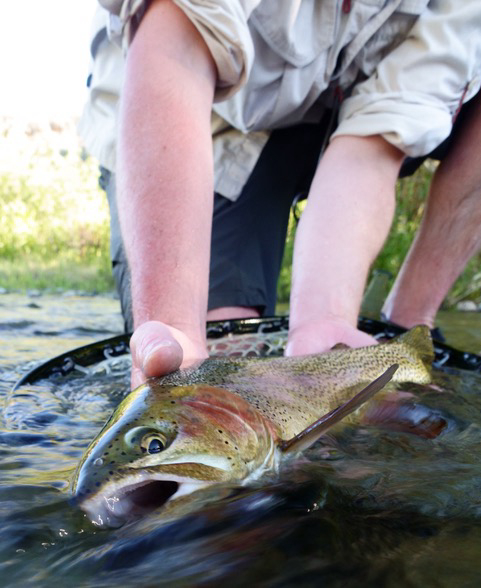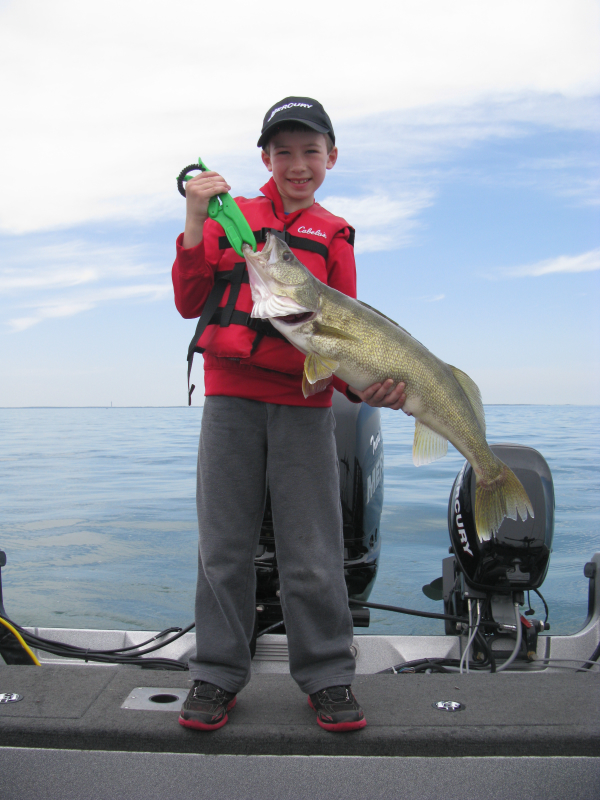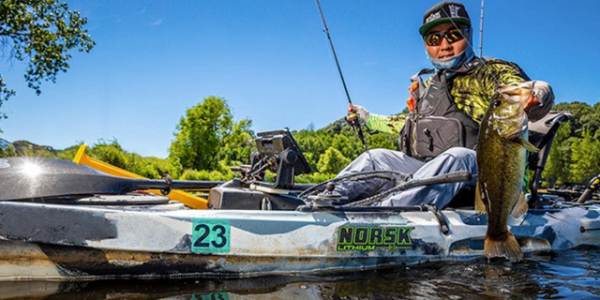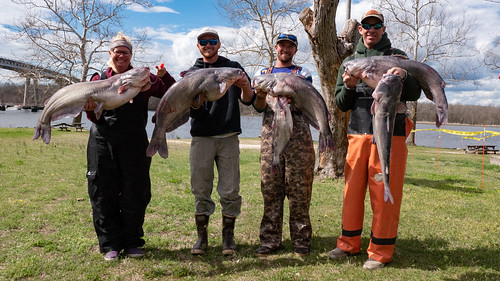Master Angler program evolves over time, continues celebration
The Department of Natural Resources’ popular Master Angler program, which recognizes those who catch fish that exceed certain minimum standards, has undergone a major change for 2015.
Originally, Master Angler status was determined by the weight of the fish. But with catch-and-release fishing growing in popularity, in 1992 the program began recognizing anglers who released specimens by the length of the fish they caught.
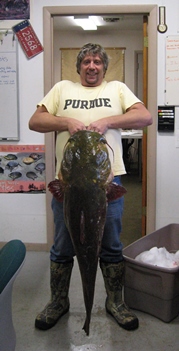 Now, in a move to simplify the program in 2015, the DNR no longer will require weights for Master Angler consideration, even if the fish are kept. Weights, however, still will be used to determine state-record fish.
Now, in a move to simplify the program in 2015, the DNR no longer will require weights for Master Angler consideration, even if the fish are kept. Weights, however, still will be used to determine state-record fish.
Michigan anglers submitted fewer trophy fish to the program in 2014 than they did in 2013, but they set five state records nonetheless. New state marks were established for black buffalo, brown bullhead, flathead catfish, quillback and white perch.
“Overall, the number of fish entered into the Master Angler program was down in 2014 from the previous year,” said Lynne Thoma, who runs the program for the DNR Fisheries Division. “It was down in both categories – catch-and-release and catch-and-keep. But we did have five new records. I think that’s the most new records ever.”
As has been the case in recent years, more anglers chose to release their Master Angler fish rather than keep them. The DNR recognized 658 fish in the catch-and-release category (down from 724 in 2013) and 327 fish that were kept, down from 483 the previous year.
The decrease in the number of Master Angler fish kept largely can be attributed to Chinook salmon. Anglers reported weighing in seven Chinooks that met or bested the minimum 27-pound standard compared to 117 in 2013. The number of Coho salmon entered dropped, too – from eight in 2013 to three in 2014.
Anglers reported releasing four Chinook salmon that measured 39 inches or more, down from the eight kings caught and released in 2013.
But 2014 turned out to be a good year for anglers pursuing trophy specimens of several species of prized game fish, including bass and walleye.
Catch-and-release anglers reported catching 32 Master Angler largemouth bass (a minimum length of 22 inches) compared to 23 the previous year. Anglers reported keeping four Master Angler largemouths (a minimum of 6 pounds) compared to five in 2013.
Master Angler largemouths came from all over the state, though the majority came from the southern Lower Peninsula. Mud Lake in Livingston County produced the most with three. The largest largemouth bass reported – a 7.75-pound, 23.5-inch specimen – was taken by Eric Campbell of Plainwell from Schnable Lake in Allegan County.
Walleye anglers did well in 2014, too. Catch-and-release fishermen registered 25 walleyes (measuring at least 29 inches), more than doubling the 12 certified in 2013. Catch-and-keep anglers reported 12 walleyes weighing 11 pounds or more, down from 20 the previous year.
The Detroit River, Saginaw River and St. Clair River all produced multiple Master Angler walleyes. The largest brought to the scales was a 13.19-pounder taken by Mark Phillips of Rapid River, caught through the ice of Little Bay de Noc in February.
Smallmouth bass anglers enjoyed an excellent year with 69 fish released and 15 kept, though the overall total is down from 2013 (88 and 14, respectively). Lake St. Clair produced more Master Angler smallmouths than any other fishery, as well as the largest that was kept – a 7.88-pounder caught by Ralph Marino of Roseville.
Smallmouth bass represented the most Master Angler applications in 2014.
For most species, Master Angler fish numbers caught in 2014 were down slightly from 2013. Anglers reported 76 bluegills total (for both categories combined), compared to 90 in 2013. Anglers registered 60 crappie (72 in 2013) and 11 yellow perch (28).
Muskellunge fishermen reported releasing 30 Master Angler fish, down from 38 in 2013, and keeping four fish, up from three last year. Lake St. Clair produced the lion’s share of master angler muskies, which has been the trend in recent years.
The state-record fish recorded in 2014 were unique in an unusual way; none of them was caught by hook and line in open water. Three were taken by bow fishermen and the other two were taken through the ice.
Joshua Teunis of Grand Haven set the record for his 41.25-pound black buffalo, taken with a bow and arrow from Bear Lake in Muskegon County; Jared Gusler of Fairview arrowed the record 3.77-pound brown bullhead from Alcona Dam Pond; and Benjamin Frey of Grand Rapids shot the record 8.25-pound quillback – often commonly called a quillback sucker – from Hardy Dam Pond in Newaygo County.
Dale Blakley of Niles started the record-setting in January 2014 with a 52-pound, 46-inch flathead catfish that he caught on a wax worm and crappie jig from Barron Lake in Cass County. Less than two weeks later, Aaron Slagh of Holland made his way into the record books with a 1.93-pound, 13.25-inch white perch, caught from Muskegon Lake on a Hali spoon.
Complete listings of Master Angler fish from 2014 and previous years can be found on the DNR website at www.michigan.gov/masterangler. Anglers of all skill and experience levels are invited to hit the water – no license required – during Michigan’s annual Summer Free Fishing Weekend (June 13-14).


